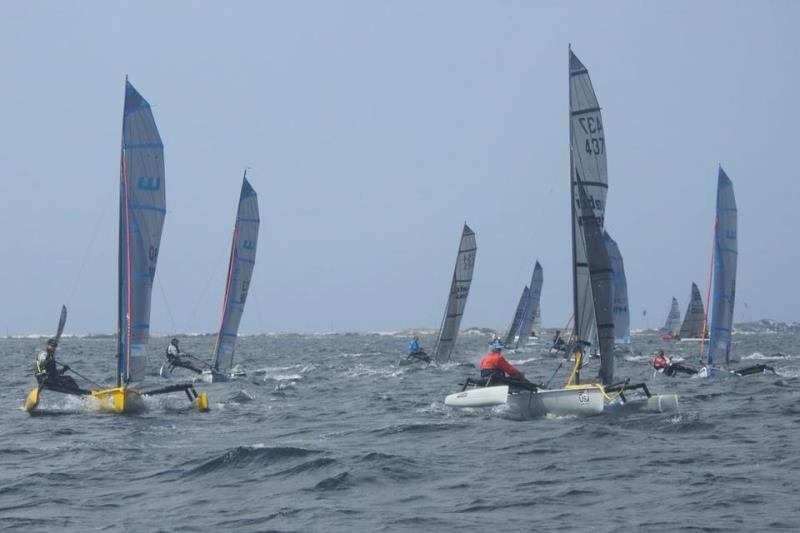
An interview with Robin Keller about the 2019 U.S. Multihull Championship
by David Schmidt 5 Jun 2019 01:00 AEST
June 7-9, 2019

US Multihull Championships/WetaFest © Fort Walton Yacht Club
While all championship-level regattas boast their share of high hurdles, the annual U.S. Multihull Championship tests sailors on multiple levels as they compete for the Hobie Alter Trophy. This year’s regatta, which will be hosted by the Spray Beach Yacht Club and sailed on the waters off of Spray Beach, New Jersey (June 7-9), will be contested using a bring-your-own fleet of Hobie 14s…even though last year’s regatta was contested using a BYO fleet of Weta Trimarans, and the year before the trophy was determined using Hobie 17s.
Confused?
Don’t be. Along with venue, the U.S. Multihull Championship intentionally rotates through a variety of different multihull classes, year-on-year, to test the true depth of the country’s multihull-sailing talent. For the faithful, this requires mastering a different boat each year, but—in addition to possibly lifting the Hobie Alter Trophy—this non-stop learning curve promises to help round out one’s multihull skills and resume.
Not surprisingly, this challenging format event has long attracted World Championship- and Olympic-level sailing talent from a variety of high-performance mono- and multihull classes, and this year’s fleet is shaping up to be as quick as always.
I checked in with Robin Keller, the event’s co-chair, via email, to learn more about this demanding and highly competitive multihull regatta.
How many boats are you expecting on the starting line?
Typically, 20-30 – the entire fleet starts at the same time.
Where do most of these boats/sailors come from? Are there any pronounced geographic concentrations? What about from the New Jersey area? Are you expecting much local turnout?
Combination of local and national. There is a strong multihull fleet in division 11 which is where we are, but there is also national attention to this.
How would you describe competition levels at the event?
Very high – these are probably the most experienced sailors in multihull vessels.
What kind of course shapes can sailors expect?
We use cylinders and tetrahedrons depending on the course layout. Windward and Leeward marks are set usually a mile apart depending on wind and wave conditions.
Does the event event/RC resect or enforce any wind limits or will they start races in a serious blow? What about on the low-end of the spectrum? Is there a minimum wind speed needed? And finally, what kind of conditions are common off of Beach Haven in early June?
The minimum windspeed is usually less than five knots. In June that is an unusual condition unless under dense fog – hot sunny days are always windy due to a thermal that fills in from the South daily after noon that peaks to 12-15 knots – the water is shallow so the swells are minimum with that wind, 6-12 inches max.
If a cold front is moving in or has moved in then the prevailing winds are more based on that system, the clearing wind on a front is always a NE blow about 10-20 knots. We have canceled sailing at our venue when it is deemed unsafe to have patrol leave the harbor or where we are concerned about too many boats going over in a gust, but if patrol and RC feel comfortable leaving the harbor the race will be held – in any condition it is the responsibility of the skipper alone to determine whether he [or she] is racing or not.
What kind of evening/onshore entertainment can sailors look forward to, once the finishing guns fall silent?
We will have dinner each night, and Saturday Night is our famous annual pig roast – with food and entertainment – always fun and all the members attend!